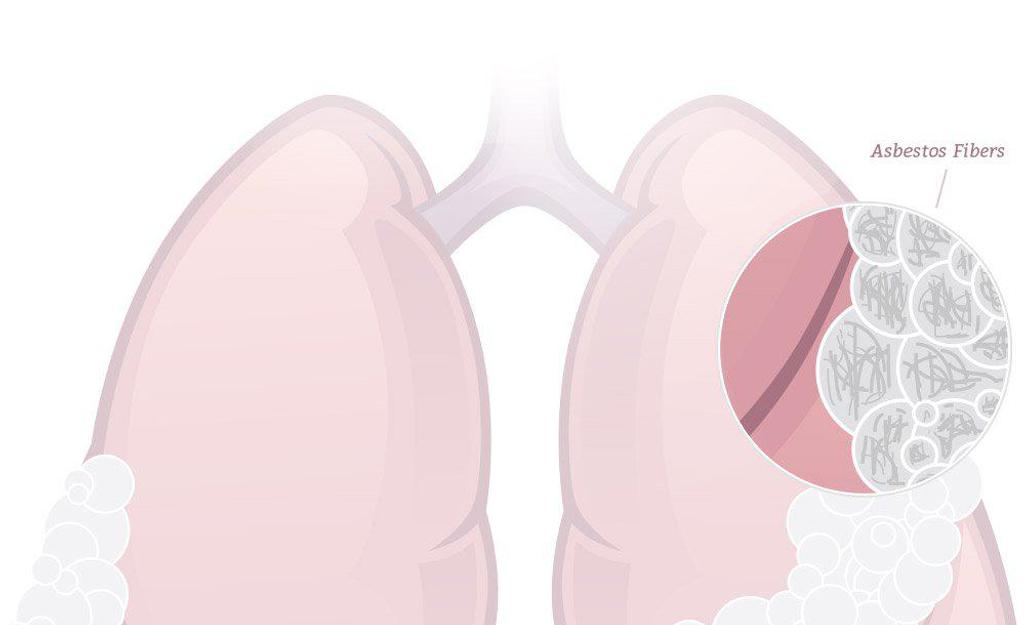What Is Pleural Mesothelioma?
Pleural mesothelioma is the most common type of malignant mesothelioma cancer, accounting for 75 percent of all cases.
The cancer develops in the thin, protective lining of the lungs, called the pleura. Exposure to asbestos — a natural mineral that is toxic to humans — is the primary cause.
When a person inhales airborne asbestos, the body struggles to remove the mineral’s needle-like fibers. Over decades, these trapped fibers can accumulate in the pleura, triggering genetic changes that can lead to serious respiratory conditions and possibly cancer.

Who Is Most at Risk?
Mesothelioma is known as an occupational cancer, as it typically develops after long term exposures to asbestos in the workplace.
In Louisiana, asbestos exposure is most common in shipyards and oil refineries. The state ranks 18th in the U.S. for mesothelioma and asbestosis deaths.
Until the late 1970s, asbestos was the favorite material used to insulate pipelines in Louisiana’s oil refineries in Shreveport, Princeton and Lake Charles. The mineral, known for its heat-resistant properties, was also used to insulate tanks, reactors, pumps and furnaces.
Shipyard workers in bustling port cities such as Baton Rouge and New Orleans were frequently exposed to asbestos. The mineral was used throughout cargo ships as pipe insulation, adhesives for gaskets and valves and even in the paint that covered the ships.
Workers off-loading from a ship or delivering a load aboard a ship was at risk, as crates, pallets and wrapping materials often contained asbestos.
Before worldwide production declined in the 1980s, thousands of asbestos-containing products entered Louisiana ports via the Gulf of Mexico. Workers responsible for opening crates and inspecting these products were also at risk.
Devastation from natural disasters such as Hurricane Katrina is another cause for concern. Asbestos-containing products are still prevalent in older infrastructure, especially in New Orleans and other historic cities.
When hurricanes, floods and other storms damage old buildings, deadly asbestos fibers can become airborne, posing health risks for residents and relief workers. First responders, such as police and firefighters, remain at high-risk for asbestos exposure.
When Should You Be Worried?
Mesothelioma is a rare cancer, with approximately 3,000 people diagnosed each year in the U.S. About 2,000 of those cases are of the pleural type.
While mesothelioma can develop after just one instance of asbestos exposure, most cases are linked to repeated exposures over many years.
One unique aspect of mesothelioma is its long latency period. It can take 20-50 years between first exposure to the onset of symptoms — the main reason why the cancer mostly affects seniors.
Common symptoms for pleural mesothelioma include dry cough, shortness of breath (dyspnea), chest pain, muscle weakness and fever.
Because these symptoms mirror other cancers or less serious conditions such as the flu, mesothelioma is sometimes misdiagnosed. By the time mesothelioma is diagnosed by a specialist, the cancer is often in later stages when more effective treatments are no longer an option.
There is no cure for pleural mesothelioma, but survivors are living longer thanks to advances in therapy, including surgery and clinical trials.
A key to longer survival is early detection. Anyone with a known history of asbestos exposure should get regular check-ups with their primary care physician, letting their doctor know about their exposure history.
If early warning signs such as chronic cough or chest pain appear, consult a doctor immediately. An asbestos-related disease specialist will be able to determine whether your symptoms indicate mesothelioma or another asbestos-related disease.
This article was provided by the Pleural Mesothelioma Center, offering free assistance and resources to anyone coping with pleural mesothelioma.
One more thing to note: One-third of all mesothelioma patients are veterans, and approximately 6,000 veterans afflicted with this asbestos-caused cancer died between 1999 and 2005 alone. The reason this cancer targets so many veterans is because of the prevalence of asbestos use in the military in the past. The Mesothelioma Veterans Center helps to spread awareness to veterans and their families. See their website for free veteran specific resources and support for patients and families.
Upcoming Events See All
No upcoming events at this time. Please check back soon.
